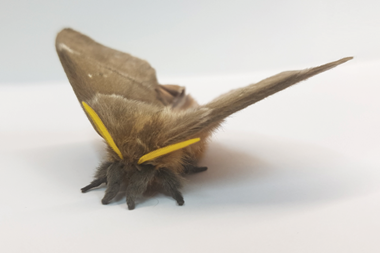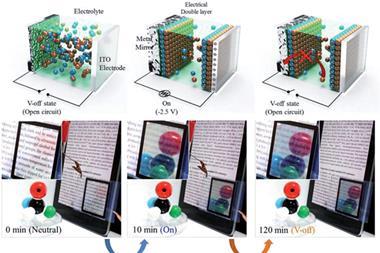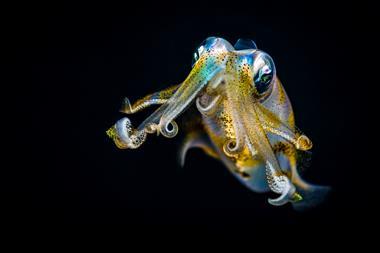German researchers have drawn inspiration from moth eyes to make nanostructured surfaces that allow for the near-perfect transmission of light with almost zero reflection across a broad range of wavelengths. The approach could find uses in sensitive optical applications like touchscreens and sensors and improve the performance of high power lasers used in micromachining and medical procedures.

Antireflective (AR) surfaces are usually comprised of multilayered films but they are limited by only working at a specific spectral range, which reduces their efficiency. To overcome this, researchers have looked to the structure of moths’ eyes, which are covered in a film of bumpy hexagonal nanostructures that transmit a broad spectrum of light sources. This helps moths navigate in the dark, while eliminating reflections that would otherwise alert predators.
Although moth eye inspired antireflective surfaces have been made before, difficulties in producing the surface nanostructure severely limited their size. Now, teams at the Max Planck Institute for Medical Research, Heidelberg, and the University of Applied Sciences in Jena have worked together to make lenses up to 25mm in diameter with nanopillared surfaces that have 99.8% transmittance and just 0.02% reflectance for a wide wavelength range coving visible and near infra red.
‘Compared to nanostructures manufactured by many other groups, our method allows very good fine-tuning of the surfaces’ optical properties,’ explains co-author Jan-Henning Dirks, now at City University of Applied Sciences in Bremen. ‘Also, compared to multi-layer AR-coatings, our nanopillar structure shows a much higher laser-induced damage threshold, hence it can be used in high power laser systems where conventional coatings would fail.’

Optical properties are affected by both the length and the shape of nanopillars, so the team first conducted computer simulations to find the best arrangement of nanopillars on a surface for maximising transmission and minimising reflection within the required range of wavelengths. A self-organising hexagonal mask of gold nanoparticles was then placed onto a silica substrate which was followed by reactive ion etching to transfer the gold mask pattern into the substrate and create pillars.
‘What impresses me about this work is the high degree of control that’s possible with the approach,’ comments Stuart Boden, who investigates AR surfaces at the University of Southampton, UK. ‘This enables the shape and height of pillars to be defined accurately and so the surface can be carefully optimised for maximum transmittance over a specific wavelength range, reaching an impressive 99.8% transmittance.’
However, the cost associated with the multistage process could limit wide-scale adoption. ‘For this reason, the technique may be more applicable to small area, high-end optical devices such as laser systems, rather than, for example, large area, low cost solar power applications,’ Boden adds.
References
Z. Diao et al, Nano Lett., 2016, DOI: 10.1021/acs.nanolett.6b03308












No comments yet